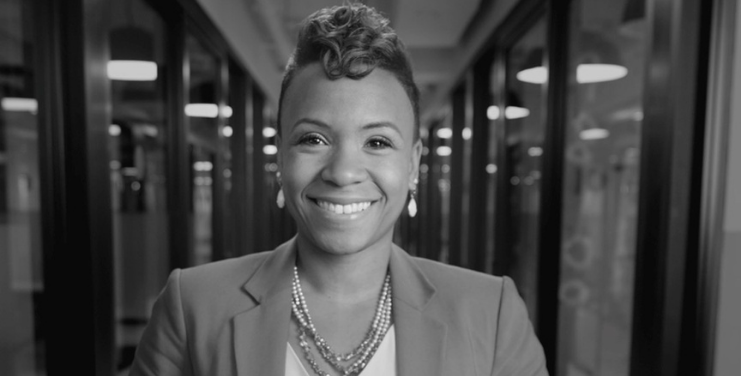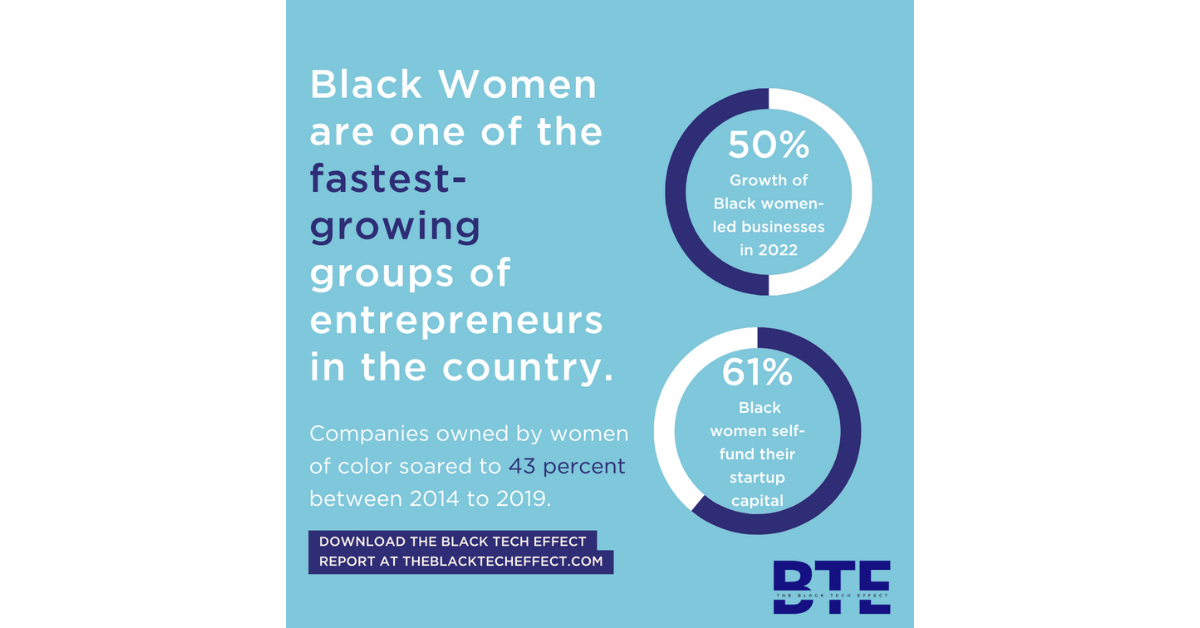The Plug hosted a live discussion with Stephanie Lampkin, the founder and CEO of Blendoor, a diversity, equity and inclusion analytics and hiring software company. “Our ultimate goal is for allowing individuals who represent multiple identities and values to identify companies where they’re most likely to succeed and belong,” Lampkin said.
This interview has been edited for clarity and length.
Sherrell Dorsey: Before we dive into the report, can you give some background on where this report fits into the scope of the work that Blendoor does today?
Stephanie Lampkin: We are now a rating and analytics company, we have conducted external audits on about 400 companies across tech and finance to develop a rating score that investors and job seekers can trust to access how well companies are executing their diversity, equity and inclusion pledges.
This report was our first foray into understanding the extent to which financial services companies made very big pledges related to DEI, specifically after the murder of George Floyd and comparing those pledges to their actual performance across leadership, recruitment, retention and impact.
SD: That work is so necessary especially, as you mentioned, post-George Floyd. I wanted to step into the report a bit, among the industries that have documented issues around diversity and representation why was it important to focus on financial services?
SL: We specifically wanted to focus on finance this go-round because we saw a resurgence in public statements and commitments, and there seems to be a reckoning in the financial services industry with the impact that they have had historically on systematic inequalities across different communities and gender representation.
Given the history that the largest financial institutions in the world have had on impacting social issues, we thought it was very relevant to focus our attention on understanding their actual performance.
SD: What were some of the more surprising components of the report?
SL: I’ve been in the game for about seven years now so there’s very little that surprises me!
There’s a lot of consistency in inequity across the board, and across industries. But I was surprised to find that there’s actually quite a bit of diversity at the entry-level stage for a lot of these companies but the tapering off as you get higher and higher up into management and board representation is really astonishing. There’s a significant drop-off that I would say is more than what we’ve been in other industries.
SD: When you mention other industries does that include tech? Some of the numbers around lack of representation seem comparable to the tech industry, so curious how that compares.
SL: The pattern that we found to be more significant in finance is the drop-off. Tech, unfortunately, is underrepresented from entry to executive in a lot of categories, but that’s not the case in finance. The pipeline problem myth is far more prevalent in finance because, clearly the talent is there, they’re just not being promoted and compensated throughout their trajectories.
SD: With these insights, this report helps to unveil inequities and challenges, how do you hope companies or leaders will use these insights to make changes?
SL: There is a call to action in the report, and I always say the first step is measurement. Melody Hobson has great insight that ‘until you actually measure something you don’t truly care about that thing’ and we see this in many other business domains.
I’m hoping that as companies, investors, and job seekers see things like the work you’re doing at The Plug and many others that are bringing to light the numbers, they will feel more inclined to prioritize actually measuring, holding themselves accountable, then also increase transparency by sharing that data.
Companies like ours can do a better job of helping folks understand benchmarks and how we can put systems in place to optimize improvement.
SD: One of the challenges we’ve seen trying to dig into more private data around culture, diversity or belonging, there’s not always a ton of transparency from private companies. I’m curious of Blendoor’s relationship with companies and changes you’re seeing in self-reporting or being willing to share insights into how they’re measuring diversity within their companies.
SL: Regulators and investors are taking a much larger stand in requiring companies, both public and private, to report this data. For public companies it’s straightforward, they already complete an EE0-1 (Employment Information Report) form and to a certain extent provide information about their executives and board in their DEF 14A (definitive proxy statement) and proxy statements, or S1 filings to the SEC.
But for private companies, there’s still a big gap in the standardization of the data they report. But we’re seeing places like the U.K. with their annual pay gap reporting requirements and the state of California is following in line to push forward standard ways of reporting.
Often companies will shed a light but in a way that is most favorable and not in a way that is easily comparable.
SD: From the report, you identified top companies for recruiting and representation of women, can you talk about some of these top three companies and how we should consider these rankings?
SL: I’m going to encourage everyone to review the report, we were careful not to name specific companies because there are high performers in certain domains like gender diversity and recruiting who aren’t necessarily top performers for retaining underrepresented minority talent.
Honing in on and understanding the intersectional differences among companies is really important for us. Our ultimate goal is for allowing individuals who represent multiple identities and values to identify companies where they’re most likely to succeed and belong.
SD: A lot of the questions we’re now asking of the data are sometimes the very first time they’ve been asked.
Ad nauseam we have seen the question about ‘how many Black women have raised over $1 million?’. But for these specifics around representation I feel like you’re very early in the space. As a DEI researcher what would you like to happen next from gathering and publishing data like this?
SL: In 2020, and 2021 I want down a rabbit hole of understanding how standards are formed. Standard & Poor (S&P), the premier global credit rating agency, was formed a little over 100 years ago because a lot of companies were duping investors about their financial performance, much like what’s happening now with diversity reports.
They were putting out shiny numbers and narratives around how they were performing, but there lacked consistency and governance. So, what I hope to see is a maturity in the ways in which human capital management is measured, the way it’s reported and the way that the general public can get access to it in order to have a much greater level of accountability, in what right now just feels like the wild wild west.
I think we’re headed in that direction, once we get to that point people can start choosing companies not just based on how much money they can make, but whether it aligns with their core values and visions for the future.








